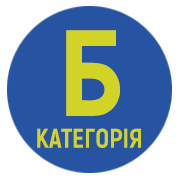ACTIVATION OF STUDENTS' COGNITIVE ACTIVITY IN THE LABORATORY WORKSHOP ON THE STUDY OF γ-RADIATION USING DIGITAL TECHNOLOGIES
DOI:
https://doi.org/10.32782/cusu-pmtp-2024-1-8Keywords:
activation of students' cognitive activity, research of γ-radiation, laboratory practice, interactive learning methods, data visualization, computer simulation.Abstract
This article investigates the impact of digital technologies on enhancing students' cognitive activity in laboratory studies of γ-radiation. The study focuses on the development and implementation of experimental tasks based on the cycles of experimental and theoretical research. The comparison of real and virtual experiments allows us to demonstrate the alignment between the cycles, emphasize the importance of digital tools in physics education, and highlight the potential of virtual experiments to complement real-world research. The research findings indicate that the proposed research and applied experimental tasks, as well as phenomenological, functional, and constant experiments, significantly improve the quality of students' scientific knowledge. The study emphasizes the need to stimulate students' cognitive activity and highlights the potential of using software for simulating physical experiments and laboratory work in physics to achieve this goal. The article outlines the features of such software, which should meet the following requirements: Interactivity and visualization: enabling interactive user interaction and graphical visualization of experimental results for a better understanding of physical processes. Realism: using realistic parameters and providing reliable physical data. Parameter customization: allowing for the modification of experimental parameters to explore different scenarios and obtain diverse results. Result analysis: providing functions for analyzing the obtained data, including plotting graphs, processing results, and comparing them with theoretical models. Support for teachers and students: offering tools for creating and sharing laboratory work, as well as opportunities for collaborative project work between teachers and students (access to a shared cloud environment). The article argues that software meeting these requirements will effectively assist students and teachers in conducting laboratory work in physics and expand their opportunities for studying and exploring physical phenomena. The prospects for further research lie in the development and testing of such software.
References
Ковальов Л. Є., Медведєва М. О., Побережець І. І. Використання інтерактивного імітатора фізичних процесів Step в освітньому процесі у закладах вищої освіти. Фізико-математична освіта. 2021. Випуск 3 (29). С. 68–73. DOI: https://doi.org/10.31110/2413-1571-2021-029-3-011.
Mykolaiko V. V. Development of independent cognitive activity of higher education applicants in teaching physics in pedagogical institutions of higher education. Наукові інновації та передові технології. 2023. № 10 (24). С. 463–476. DOI: https://doi.org/10.52058/2786-5274-2023-10(24)-463-476.
Подопригора Н. В., Чередник Д. С. Розвиток навчально-пізнавальної компетентності учнів у процесі виконання практико-орієнтованих завдань з фізики в цифровій лабораторії Vernier. Науковий часопис Національного педагогічного університету імені М.П. Драгоманова. Серія № 5. Педагогічні науки: реалії та перспективи. 2023. Вип. 92. С. 100–106. DOI: https://doi.org/10.31392/NPU-nc.
series5.2023.92.1.21.
Радченко М. І., Голубєва М. О., Бахтіярова Х. Ш. Засоби активізації пізнавальної діяльності студентів на лекціях. Наукові записки НаУКМА. Педагогічні, психологічні науки та соціальна робота. 2015. Т. 175. С. 29–32. URL: http://nbuv.gov.ua/UJRN/NaUKMApp_2015_175_5.
Салтикова А. І., Завражна О. М., Стома В. М. Шляхи активізації пізнавальної діяльності студентів на спеціальному практикумі з фізики мікросвіту. Фізико-математична освіта. 2020. Вип. 1 (23). С. 116–121. DOI: https://doi.org/10.31110/2413-1571-2020-023-1-019.
Сальник І. В., Сірик Е. П., Соменко Д. В. Використання платформи Arduino у підготовці вчителів фізики до STEM орієнтованого навчання. Інформаційні технології і засоби навчання, 2023, Том 95, № 3 (2023). 228 с. С. 124–142 [Ukraine]. DOI: https://doi.org/10.33407/itlt.v95i3.5155.
Стратегія розвитку вищої освіти в Україні на 2022–2032 роки (схвалена розпорядження Кабінету Міністрів України від 23 лютого 2022 р. № 286-р) [Електронний ресурс]. Законодавство України. Верховна рада України: Розпорядження Кабінету Міністрів України «Про схвалення Стратегії розвитку вищої освіти в Україні на 2022–2032 роки» від 23 лютого 2022 р. № 286-р. URL: http://surl.li/rqqzm (дата
звернення: 17.03.2024).
Царенко О. М., Сальник І. В., Сірик Е. П., Сірик П. В. Лабораторний практикум з курсу загальної фізики: квантова фізика. Навчально-методичний посібник. Кіровоград : РВВ КДПУ імені Володимира Винниченка, 2014. 86 с. URL: https://phm.cuspu.edu.ua/images/KVANTOWA.pdf (дата звернення: 17.03.2024).
Kostyria I., Bereziuk D., Sadovyi M., Podoprygora N., & Tryfonova O. Use of smart technologies in the training of specialists in higher education institutions. Amazonia Investiga. 2023. Vol. 12 (62). P. 149–157. https://doi.org/10.34069/AI/2023.62.02.13.
Mykolaiko V., Honcharuk V., Gudmanian A., Kharkova Y., Kovalenko S., Byedakova S. Modern Problems and Prospects of Distance Educational Technologies. International journal of computer science and network security, 2022. Vol. 22, No. 9. P. 300-306. DOI: https://doi.org/10.22937/IJCSNS.2022.22.9.40








